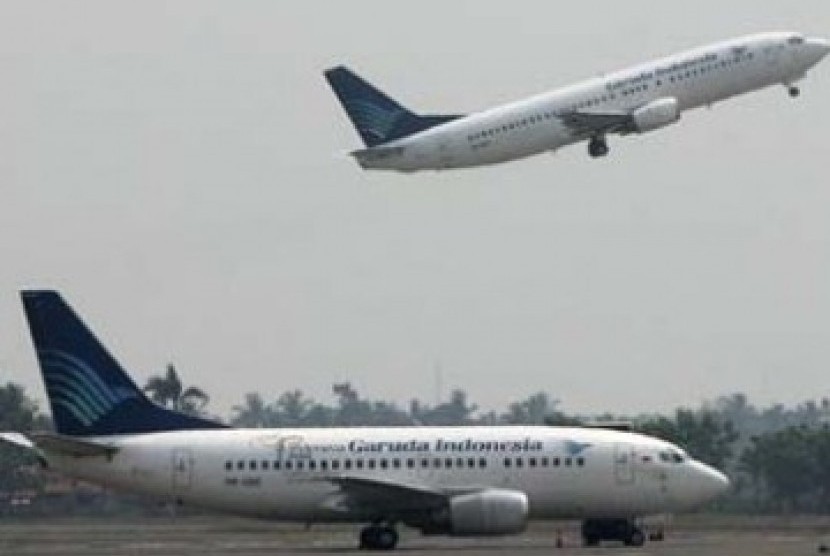REPUBLIKA.CO.ID, JAKARTA -- Garuda Indonesia has announced that its net income jumped 123.4 percent to US$51.4 million in the year that ended on September 30, 2015, after it suffered a loss of US$220.1 million during the same period last year.
The national flag carrier also managed to increase its total revenues from US$2.831 billion in the January-September 2014 period to US$2.845 billion in the corresponding period this year, Garuda Indonesia President Director M Arif Wibowo said here on Friday.
Total expenses fell to US$2.72 billion from US$3.08 billion.
"The company's increased performance is a result of the application of business development strategy through the so-called "quick wins" program and tight cost efficiency discipline, implemented in a sustainable manner since early 2015," he said.
The performance was achieved at a time when the aviation industry was facing a wide range of challenges, including economic slowdown, volcanic eruption and haze disaster, he said.
During the January-September 2015 period, Garuda Indonesia Group including Citilink managed to transport 24.55 million passengers, up 17.5 percent from 20.89 million passengers in the same period last year, he said.
Just in the third quarter, Garuda Indonesia transported 17.69 million passengers comprising 14.51 million domestic passengers and 3.18 million international passengers. During the same period last year, the company had handled 15.56 million passengers.
Arif said Citilink, a subsidiary of Garuda Indonesia, carried 6.87 million passengers in the year that ended on September 30, 2015, a 28.8 percent increase compared to 5.33 million during the same period last year.
The frequency of Garuda Indonesia's and Citilink's flights in the domestic and international sectors rose to 186,105 in the third quarter of 2015 from 165,642 in the same period last year.
"In addition, the production capacity (availability seat kilometer/ASK) also increased from 36.9 billion (in 2014) to 38.75 billion in 2015," he said.
As of now, Garuda Indonesia Group operates 181 planes including eight Boeing 777-300ERs, 22 Airbus A330-200/300s, two Boeing 747-400s, 10 ATR72-600s, 15 Bombardier CRJ1000 NextGen, 88 Boeing 737-300/500/800NGs, and 36 Airbus A320s, with the average age of 4.7 years.


